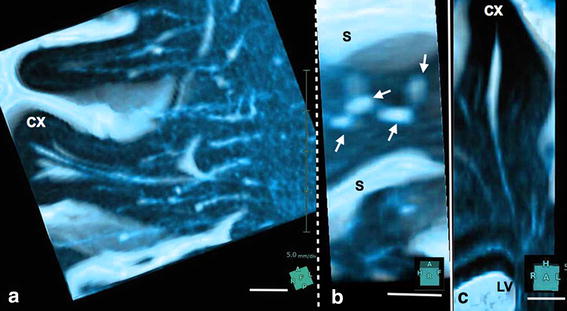Figure 5.

Magnified view of Virchow–Robin spaces in a single gyrus in control subject. a, b Volume rendering image of a right middle frontal gyrus. c Volume rendering image of a left superior frontal gyrus. Several tubular structures with sharp tips and smooth walls were observed in a single gyrus (a). They originated at the corticomedullary junction, ran medially, and terminated at the lateral end of the corona radiata. They did not penetrate the cortex (CX). Their sharp tips did not fuse and some disappeared shortly in the subcortical white matter. A view rotated 90° (b) from image (a) showed several tubular structures (small arrows) through the increased transparency of the cortex and subarachnoid cerebrospinal fluid (CSF). In a coronal image (c) of the superior frontal gyrus, VRS originated at the corticomedullary junction and ran down to the superolateral angle of the lateral ventricle (LV). Their wall was smooth and mildly curved with some bulging. They did not penetrate the cortex (CX). Observation in a normal 69-year-old man, S cerebral sulcus, scale bar 5 mm.
